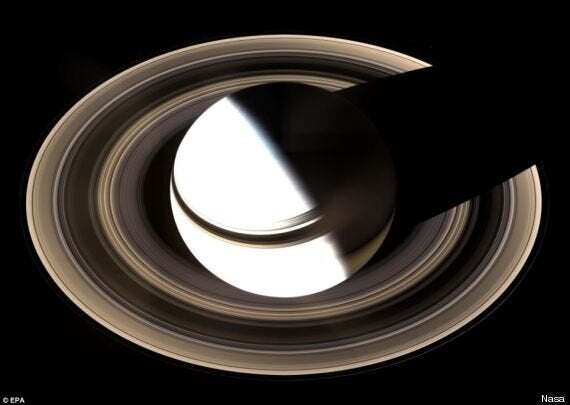Nasa's Cassini probe has done it again and taken some shots of Saturn that will simply blow your mind.
From a vantage point of 764,000 miles, the spacecraft managed to capture the planet, its rings and the shadow it casts on them.
Cassini used a process called a "pi transfer" to move into position, using the gravity of Saturn's largest moon, Titan, to get into position.

It's pretty big
Taking in the rings in their entirety was the focus of this particular imaging sequence.
Therefore, the camera exposure times were just right to capture the dark-side of its rings, but longer than that required to properly expose the globe of sunlit Saturn.
Consequently, the sunlit half of the planet is overexposed.

Among the interplay of Saturn's shadow and rings, Mimas, which appears in the lower-right corner of the image, orbits Saturn as a set of the ever-intriguing spokes appear in the B ring (just to the right of center).
Scientists expect that spokes will soon cease to form as Saturn approaches northern equinox. The exact mechanism of spoke formation is still the subject of debate, but ring scientists do know that spokes no longer appear when the Sun is higher in Saturn's sky. It is believed that this has to do with the ability of micron-sized ring grains to maintain an electrical charge and levitate above the rings, forming spokes. Thus, these may be some of the last spokes ever imaged by Cassini.
This view looks toward the unilluminated side of the rings from about 38 degrees below the ringplane. The image was taken in visible light with the Cassini spacecraft wide-angle camera on Oct. 22, 2013.
The view was obtained at a distance of approximately 1.6 million miles (2.6 million kilometers) from Saturn and at a Sun-Saturn-spacecraft, or phase, angle of 146 degrees. Image scale is 93 miles (150 kilometers) per pixel.